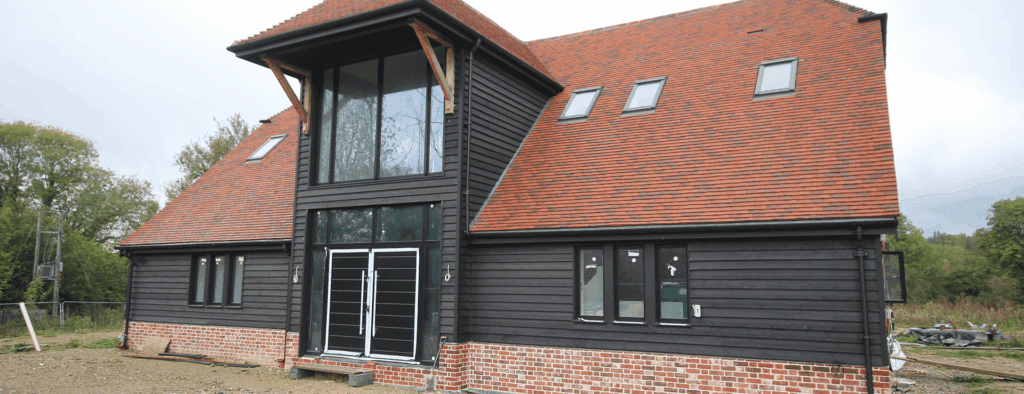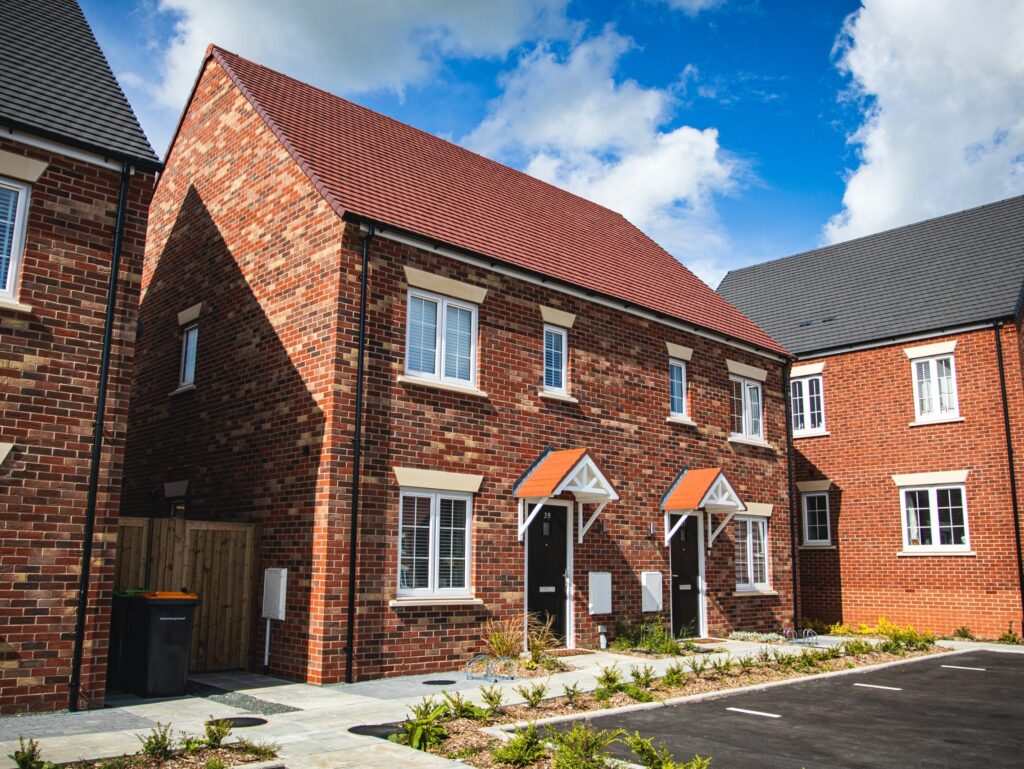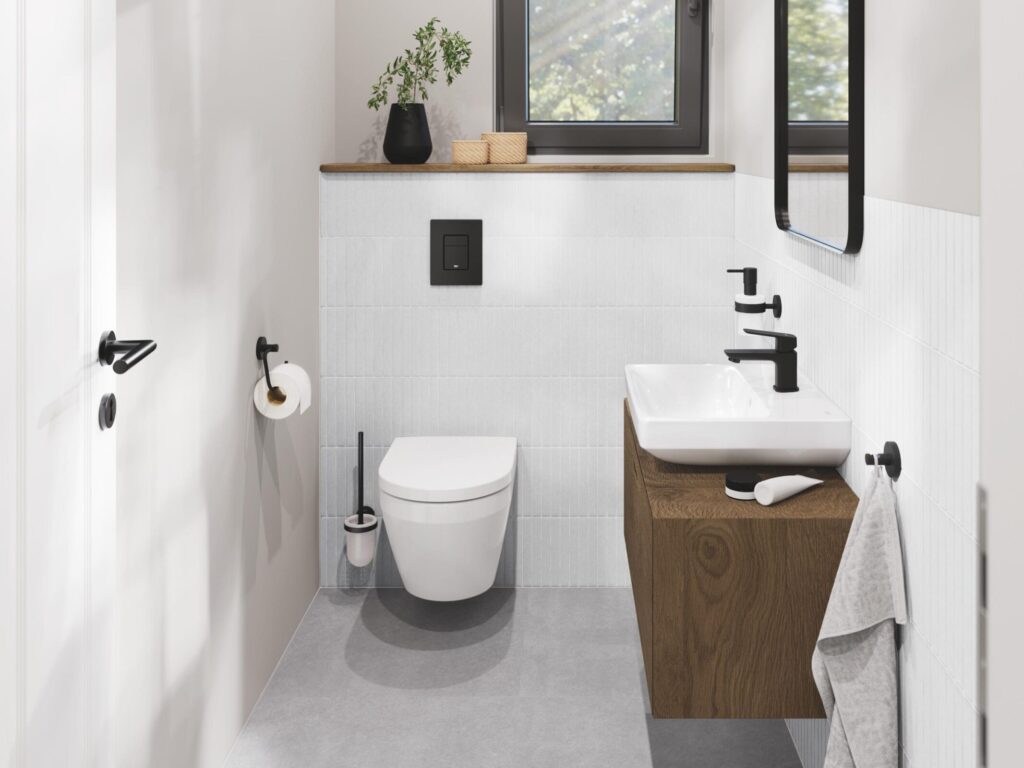By Professor Michael Benfield, Manger Director, Benfield ATT Group
Five years ago I gave a paper on Ecology to the HBF’s “Cracking the Code” conference in Birmingham. It bombed – big time, and might well still do so today. While in essence ‘ecology’ concerns us all, it is outside daily interests and seen almost as part of a different sphere.
However, at least one element of my message then is more widely understood today – Climate Change and Zero Carbon.
Back then I used trees as a proxy to illustrate the complex interaction of everything on earth – our ecological system, and the importance of timber to the ‘triple bottom line ’ of global sustainability. Begging the question “Can we be smarter about development in the future?” I instanced how, to be healthy, cities are seen as needing a 40% tree canopy cover, rising to 50% in rural areas.
While this may still need some explanation, I believe many more people today appreciate why it is better to use timber than almost any other construction material. Not only is it the only truly renewable building element available, it is also one of the most energy efficient and life giving essentials in all respects.
As they grow, trees absorb carbon dioxide from the air, turn this into carbon within their fibres and release oxygen back into the atmosphere. All breathing creatures depend on this for life. This process slows down considerably as trees mature, so it is good to harvest and replant them. The carbon stays sequestered – locked up – until the wood from the trees is burnt.
So the more trees we grow and the more timber we use for building and other products, the better our global environment becomes.
How We Are Doing It
Spurred by actual and promised changes to the building regulations, the house building sector and in particular the timber sector has, over the last few years, been innovating like crazy.
To give just a flavour of this, whether developed in the UK, or imported from abroad, we already see striking ‘new’ products in use. Examples include modified timbers, like Thermowood and Acoya, wood wool insulation, soft-board, render backings, ‘massive wood’ walls and floors, finger jointed structural timbers for joists, rafters and other long span elements.
We are also seeing much wider use of composite like glulam, together with new varieties of MDF, OSB and other ply style panel boards.
Research & Development
Meanwhile work continues on improving the processing of timber, as for instance in improved sawing methods, defect control, timber incising to improve uptake of preservatives, new adhesives for wet gluing, log and sawn timber cladding techniques, and so on, all leading to improved durability and dimensional stability.
Combined with new methods of reducing kiln drying times, and new treatments, like powder coatings, UV curing systems, and fire resistance, these are changing the way timber buildings are designed and made, as for instance in the use of composite claddings and timber windows.
On the horizon possibilities exist for the use of, for example, paper-mill sludge, alternatives to foam insulation materials, further ‘flexible use’ panel materials, greater localisation of production and the integration of other ‘woody’ fibre materials, like hemp and straw.
All are accompanied by the greater use of recycled timbers and improved waste recycling methods, leading to greater efficiencies, higher material yields, and improved economic benefits.
Regulations in Remission
Despite – or perhaps because of – its promise to be “The Greenest Government Ever”, in March 2011 the UK Government bowed to building industry and other pressures and changed the ‘Zero Carbon’ rules.
While the 2013 target of a 44% tightening of the energy efficiency building regulations remains, the 2016 target has been ‘redefined’. Now this only requires zero emissions from ‘regulated energy use’; that is to say the energy required to heat and cool a home, and to provide hot water and lighting.
The original target for emissions from heating, lighting, hot water and building services, remains, but this will no longer apply to built-in electrical appliances such as hobs, ovens, or washing machines, or to equipment that is plugged in.
As Chancellor George Osborne revealed at that time, new homes will not now have to be fully zero carbon. Instead from 2016 they must, in effect, be built in accordance to Level 5 of the Code for Sustainable Homes (Level 6 being zero carbon).
Tough Targets
Fierce standards of measuring and assessing this have been created in some countries. For example the Minergie Cerrtification scheme, adopted as the Swiss national standard, requires post-occupancy evaluation for up to 3 years to show the cost effective performance of buildings to be within 10% of base costs as a requirement for certification.
Since this has gone some way to dispel the misconception that delivering enhanced standards is not economically feasible, the adoption of such a rule in the UK could present further challenges yet.
For the time being we have merely shifted down a gear, from a 2016 Zero Carbon policy, to a 2016 Carbon Reduction policy.
Integrated Technology
Research into owner / occupier behaviour is leading to a growing understanding of the factors that influence energy use in the home. These have shown that concern for long-term energy security responds well to the implementation of appropriate technology, especially the integration of renewable energy.
Examples of this include the increasingly wide uptake in Germany and Scandinavia of homes built to Passivhaus standards that need no conventional central heating. Likewise Solar panels are contributing up to 80% of hot water requirements, although the uptake of low energy lighting – as currently offered – remains slow.
Fantastic Opportunity
As we move inexorably toward the adoption of full Level 6 of the Code for Sustainable Homes, we can be sure that our “Homes for the Future” will be very different from those still being built today. As the NHBC Foundation counsels,
“… while previous evolutionary changes in housing, such as double glazing, central heating and extra sanitary facilities have had positive effects on lifestyle for the consumer, the proposals for improving the environmental performance of new homes may not necessarily be perceived in the same way”
Using their marketing skills in predicting – and selling – what their customers want, they can, should and, if they wish future generations to consider them as socially responsible, indeed must be looking even further ahead than 2016.
It is they that should be pushing the boundaries. But to do so they also need to get Government, Mortgage Lenders, Architectural, Surveying and other construction professions fully on board to sell what they produce.
Grasping the Nettle
Many of the tools needed to do this are already becoming available. For instance research by the NHBC Foundation into homeowner psychology and attitudes to environmentally friendly housing is helping to identify issues and potential barriers to achieving the 2016 objectives, as well as reflecting house builders’ views.
True, it will affect business, valuation, marketing, professional education, and corporate value modelling. But whether we like it or not, this is what is happening. Grasping the nettle now could – in fact will – give the house building industry a heroic major role in creating a truly sustainable Britain.
Rather than reluctantly lagging behind Regulation, it could – and should – lead Government in ‘future proofing’ our housing stock, profitably.
The Challenge of Change
Many of the issues have already been spelt out in, for example, the Code for Sustainable Homes. Things like microgeneration and renewable energy technologies, Climate change, Conserving energy and water, and Minimising waste.
Via the Zero Carbon Hub, the industry has already decided to implement three main principles;
• Energy Efficiency, e.g. by minimising heat loss through the building fabric,
• Carbon Compliance, e.g. via on-site energy generation, and
• Allowable Solutions to make up to 30% of energy shortfalls via, e.g. paying cash ‘compensation’ into a fund instead of having to achieve zero-carbon
However, we also need to embrace the concept of Zero Carbon living along with new types of building. This extends to include the:-
• energy used in manufacture and transport of components,
• energy used in building maintenance
• craft skills needed to ‘’tune’ the building and its environment.
The Role of Timber Frame
Timber Frame is not just panelised platform frame construction, although this is the predominant method used in the UK and many other countries. It embraces traditional Post & Beam, e.g. heavy Green Oak frames, on site ‘Stick Build’, Massive Wood, Freeform Glulam, and many composite components and methods, like Structural Insulated Panels, Tradical Hemcrete (using timber frame as the support for hemp reinforced lime mortar), and other derivatives.
In response to the need to minimise heat loss through the building fabric, more progressive firms are developing added value offerings, like factory fitted rigid foam insulation, combining recycled cellulose insulation with twin wall structures, and greater economies via Off-Site Construction.
To meet the needs of 2016 Zero Carbon and beyond, and recognising the tremendously significant contribution that the use of trees plays in CO2 control, the timber industry as a whole is bringing forward and implementing many new initiatives.
In combination these are already making a huge contribution, as evidenced by the predominance of ‘timber frame’ and timber generally in BRE’s Innovation Park at Watford. Those house builders and timber frame manufacturers involved, as well as BRE, cannot be praised sufficiently for this internationally inspiring initiative.
The Future for Timber Frame
Longer term we may see the development of new systems like passive ‘dynamic walls’, enabling buildings to be kept cool as well as warm without the need to use energy. Embracing floors and roofs this could also presage a return to lower cost, more efficient, timber ground floors replacing costly – and environmentally unfriendly – concrete slabs.
Research & Development by timber framers to develop even lighter weight structures could change the way we look at foundations, both reducing their cost and facilitating the development of ‘re-locatable houses’ enabling truly environmentally friendly homes to ‘sit lightly on the earth’ (a pet theme of mine).
Likewise greater collaboration with utility and equipment providers could see more efficient appliances becoming a built in supply feature for timber framers.
For example, the adoption of LED lighting and low voltage appliances could facilitate the factory installation of plug together electrical harnesses, a la the automotive industry. In itself this could quite probably reduce the need for energy, and could even see on-site renewables becoming more practicable, even for very small developments.
Conclusions
Apparent dilution of the 2016 ‘Zero Carbon’ regulations is merely cosmetic. Their relaxation promises little, if any, effective change. Longer term these requirements are likely to become even more demanding.
Aided by shifts in owner/occupier perspectives, objectives and psychology, house builders are uniquely placed to address these demands. With appropriate vision, they can overtake Government, revisit future energy needs, and lead the drive to secure the Nation’s future housing heritage.
Increasing the use of timber, which by its very nature already contributes enormously to ‘Zero Carbon’ objectives, can do much more to achieve these aims. Practices within the timber frame sector are already capitalising on and enhancing the efficiency, effectiveness, and economy of doing so.
However, measures like increasing the size of wall studs to carry more insulation, while probably immediately essential, are not the long term answer. Significant changes in the materials used and the way new homes are designed and manufactured are in prospect. For these trends to be accelerated, the sector needs to escape its presently disaggregated, under-financed position in the industry.
To facilitate this, Government, House-Builders, Mortgage Lenders et al need to revisit the way houses are valued, financed and ‘rated’. .
Changing from a capital to an annual cost basis of property valuation and incentivising buyers and occupiers with lower Council Tax for more efficient homes, would change business models and the structure of the industry. But it would also lead to greater investment in innovation and appropriately sustainable production.












